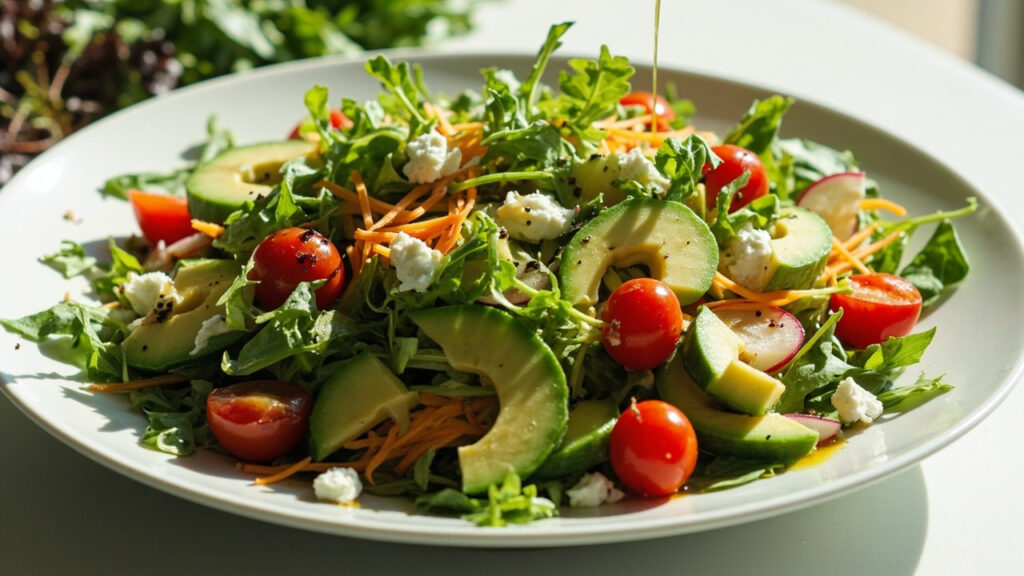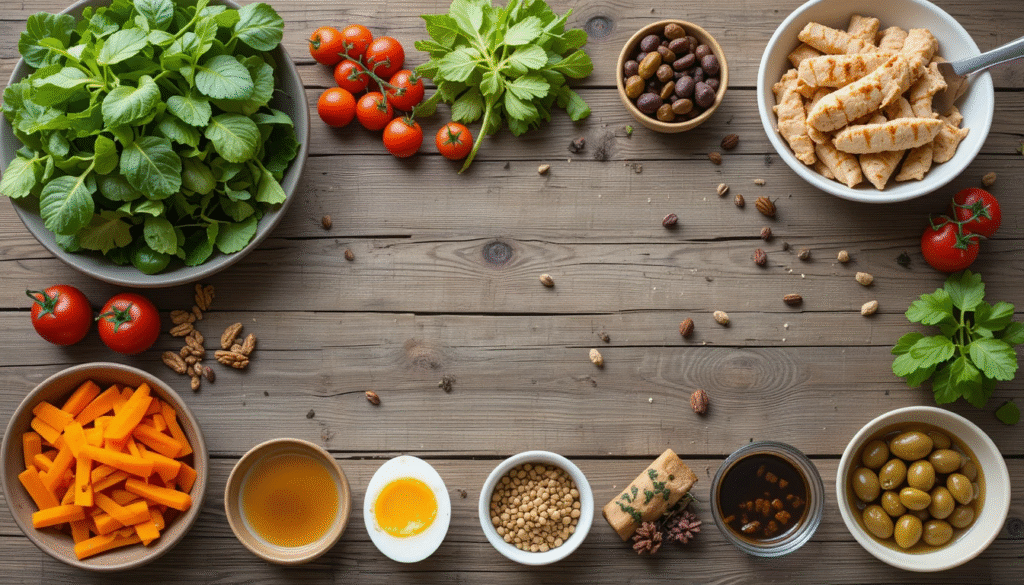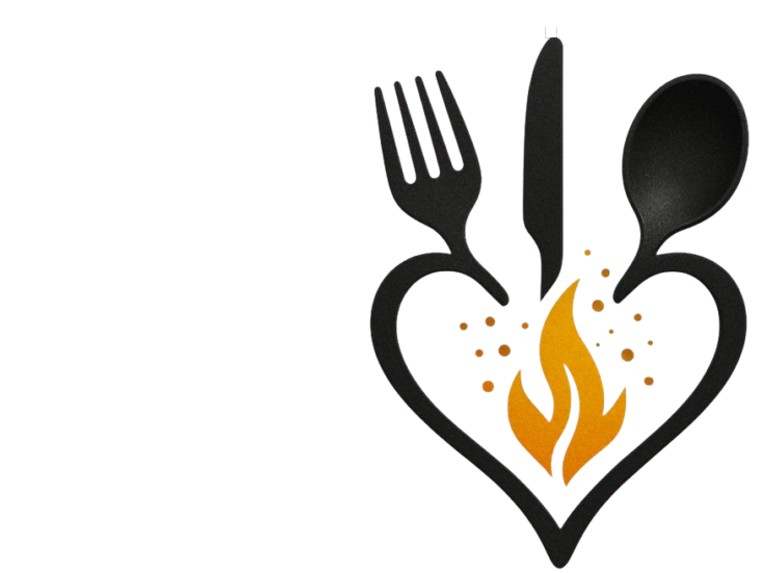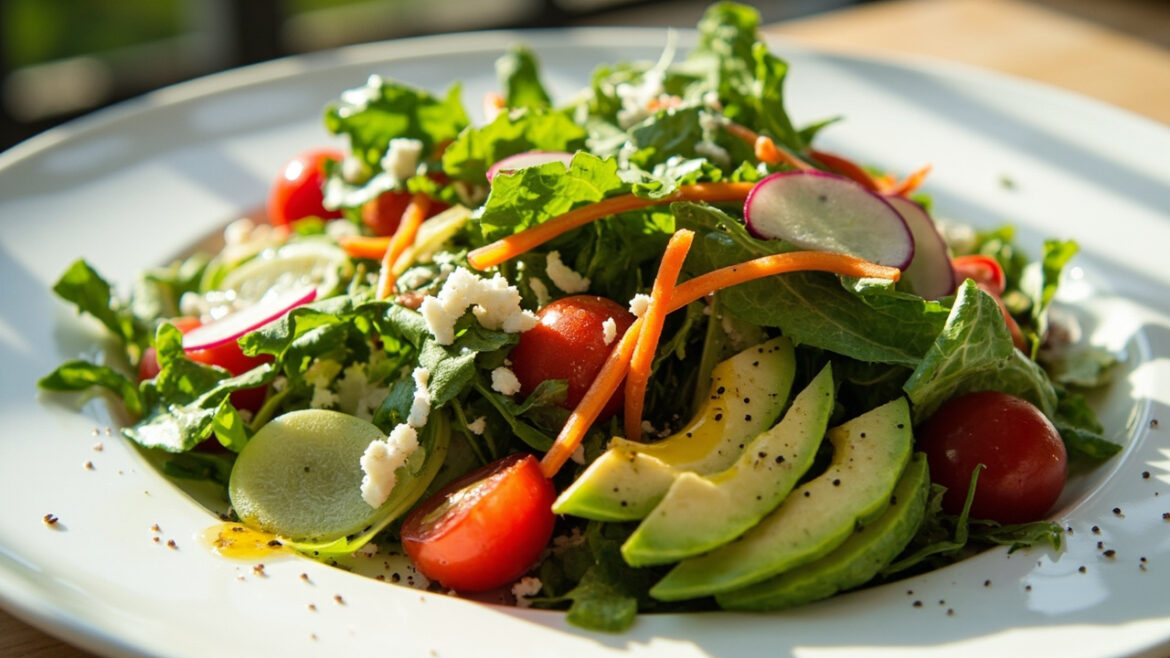Many people ask, what is salad and why has it become such an essential part of meals across the world? At its core, salad is a dish that combines fresh vegetables, fruits, grains, or proteins, often served cold or at room temperature. Unlike many cooked dishes, salad emphasizes freshness, texture, and natural flavor. Whether enjoyed as a side dish, appetizer, or main course, understanding what is salad helps us appreciate its role in healthy living.
The History and Origin of Salad
When we ask what is salad from a historical perspective, we discover that its roots go back thousands of years. The word “salad” itself comes from the Latin word “sal,” meaning salt, as early recipes involved seasoned greens. Exploring what is salad historically shows us how simple combinations of fresh ingredients evolved into a global culinary tradition.
What is Salad in English?
For non-native speakers, the question what is salad in English often arises. In English, salad refers to a dish made primarily of raw or cooked ingredients mixed together, typically dressed with oil, vinegar, or a sauce. While the word is universal, cultural interpretations vary. Asking what is salad in English highlights the fact that it can be anything from a basic green salad to elaborate gourmet creations.
Key Characteristics That Define a Salad
To fully answer what is salad, we need to look at its defining traits. It can be vegetarian or contain meat, cheese, grains, or seafood. The balance of textures—crunchy lettuce, juicy tomatoes, creamy cheese—creates its appeal. When we explore what is salad, it becomes clear that variety and freshness are the key elements.
Types of Salad Explained (Step-by-Step)
When we talk about types of salad, it’s important to understand that salads are not just about mixing raw vegetables. They can be categorized in multiple ways, depending on ingredients, serving style, and purpose. Below is a step-by-step explanation of the main types of salad you’ll often come across:
Step 1: Green Salad (Leafy Salads)
The most common type of salad is the green salad. It usually features fresh leafy vegetables such as lettuce, spinach, kale, or arugula. You can eat them plain with olive oil or add toppings like cheese, nuts, or fruits for extra flavor.
Example: Caesar salad or garden salad.
Step 2: Vegetable Salad
A vegetable salad is made with raw or cooked vegetables such as cucumbers, carrots, bell peppers, tomatoes, and onions. These salads are crunchy, colorful, and packed with nutrients.
Example: Cucumber-tomato salad.
Step 3: Fruit Salad
In this type of salad, fruits such as apples, grapes, strawberries, melons, and bananas are combined. Sometimes, honey, yogurt, or lime juice is added for taste.
Example: Tropical fruit salad.
Step 4: Protein-Based Salad
These salads include a protein source like chicken, tuna, egg, tofu, or beans. They are often more filling and can be eaten as a full meal.
Example: Chicken salad or tuna salad.
Step 5: Grain Salad
Grain-based salads use quinoa, couscous, rice, or pasta as the main ingredient. They’re nutritious and popular for meal prep.
Example: Quinoa salad or pasta salad.
Step 6: Bound Salad
A bound salad is prepared by combining cooked ingredients with a thick dressing such as mayonnaise. They are often creamy and served chilled.
Example: Potato salad, coleslaw.
Step 7: Dessert Salad
Yes, there are sweet salads too! These types of salad are made with whipped cream, custard, or gelatin along with fruits or marshmallows.
Example: Ambrosia salad.
The 4 Types of Salad You Should Know
A popular query is what is salad in terms of its main classifications. The four types most recognized are:
- Green Salads – based on leafy vegetables.
- Bound Salads – made with thick dressings and binding agents like mayonnaise.
- Composed Salads – arranged artistically for presentation.
- Dessert Salads – sweet combinations often featuring fruits or gelatin.
By learning what is salad through these categories, we get a structured way to classify the dish.
Popular Global Salad Varieties
When exploring what is salad globally, we find hundreds of unique styles. In Greece, the Greek salad combines feta, cucumbers, and olives. In Thailand, Som Tum features shredded papaya and chili. Middle Eastern tabbouleh uses parsley and bulgur. By asking what is salad across cultures, we uncover the diversity and creativity behind this seemingly simple dish.
Top 10 Salad Names Around the World
Step 1: Caesar Salad (USA/Italy Inspired)
The Caesar salad is one of the most popular salads, made with romaine lettuce, croutons, Parmesan cheese, and Caesar dressing. It’s known for its creamy, tangy flavor and crunchy texture.
Step 2: Greek Salad (Greece)
When people wonder what is salad in Mediterranean cuisine, the Greek salad is the answer. It includes cucumbers, tomatoes, red onions, feta cheese, and olives, often dressed with olive oil and oregano.
Step 3: Caprese Salad (Italy)
A traditional Italian salad, Caprese features fresh mozzarella, ripe tomatoes, and basil leaves, drizzled with olive oil and balsamic vinegar. It’s simple yet elegant.
Step 4: Waldorf Salad (USA)
The Waldorf salad originated in New York and combines apples, celery, grapes, and walnuts with mayonnaise or yogurt. It’s a sweet and crunchy classic.
Step 5: Tabbouleh (Middle East)
If you ask Middle Easterners what is salad, they might point to Tabbouleh. Made with parsley, bulgur, tomatoes, and mint, this salad is fresh and zesty.
Step 6: Olivier Salad (Russia)
Also known as Russian salad, the Olivier salad mixes potatoes, peas, carrots, pickles, and mayonnaise. It’s a festive dish often served during celebrations.
Step 7: Som Tam (Thailand)
Som Tam, or Thai papaya salad, is spicy, tangy, and slightly sweet. It uses shredded green papaya, chilies, lime, and fish sauce, creating an explosion of flavors.
Step 8: Nicoise Salad (France)
The Niçoise salad from southern France includes tuna, boiled eggs, olives, green beans, and potatoes. It’s a hearty and colorful dish.
Step 9: Cobb Salad (USA)
The Cobb salad is an American favorite, featuring chicken, bacon, eggs, avocado, cheese, and lettuce, usually arranged in rows. It’s filling enough for a main meal.
Step 10: Fattoush (Lebanon)
Fattoush is a Levantine salad that mixes lettuce, cucumbers, radishes, and fried pita bread. It’s crunchy, refreshing, and a staple in Lebanese cuisine.
What is a Salad Recipe?
Ingredients
- 2 cups fresh lettuce or mixed greens (washed & chopped)
- 1 medium cucumber (sliced)
- 1 cup cherry tomatoes (halved)
- ½ cup carrots (grated or thinly sliced)
- 1 boiled egg or ½ cup grilled chicken (optional protein)
- 2 tablespoons nuts or seeds (almonds, sunflower seeds, or pumpkin seeds)
- ¼ cup croutons (for crunch)
- 2 tablespoons olive oil
- 1 tablespoon lemon juice or vinegar
- ½ teaspoon salt
- ½ teaspoon black pepper
- Fresh herbs like parsley or cilantro (for garnish)
Instructions
Garnish and Serve
Add fresh herbs like parsley or cilantro on top. Serve immediately to enjoy the freshness.
Prepare the Base
Start by washing and chopping your greens. Place them in a large salad bowl. This step defines the foundation of what is salad recipe.
Add Fresh Vegetables
Slice cucumbers, halve cherry tomatoes, and grate carrots. Add them to the bowl for color, texture, and nutrients.
Include Protein (Optional)
To make the salad more filling, add a boiled egg, grilled chicken, tuna, or tofu. This shows that what is salad recipe can easily adapt to different needs.
Add Crunchy Elements
Sprinkle nuts, seeds, or croutons over the salad. This step makes the salad more exciting with a mix of textures.
Prepare the Dressing
In a small bowl, whisk together olive oil, lemon juice (or vinegar), salt, and pepper. This dressing is light and fresh but can be swapped with any favorite dressing.
Combine Ingredients
Pour the dressing over the salad. Toss everything gently so the flavors spread evenly. This is the heart of what is salad recipe—bringing simple ingredients together.

Essential Ingredients for a Perfect Salad
When people ask what is salad, the real answer lies in its ingredients. A perfect salad is not about one magic recipe—it’s about combining fresh elements that balance flavor, texture, and nutrition. Here’s a step-by-step breakdown of the essential ingredients for any salad:
Step 1: Choose the Base
Every salad starts with a foundation. The base provides volume and freshness.
Options: Lettuce, spinach, arugula, kale, quinoa, or pasta.
This shows that what is salad can be leafy or grain-based, depending on preference.
Step 2: Add Fresh Vegetables
Vegetables add crunch, color, and nutrients. A mix of raw and cooked veggies creates depth.
Options: Cucumbers, tomatoes, carrots, bell peppers, or roasted zucchini.
Step 3: Include Fruits for Sweetness
Adding fruits balances savory flavors with natural sweetness.
Options: Apples, strawberries, grapes, mangoes, or oranges.
This step highlights what is salad as a dish that combines unexpected yet delicious flavors.
Step 4: Add Protein for Substance
Protein makes the salad filling and turns it into a complete meal.
Options: Grilled chicken, tuna, chickpeas, tofu, boiled eggs, or beans.
Step 5: Add a Crunch Element
Texture is key to keeping salads exciting. Crunchy toppings prevent the salad from feeling flat.
Options: Nuts, seeds, pita chips, or homemade croutons.
Step 6: Include a Flavor Booster
Salads need ingredients that stand out and add bursts of flavor.
Options: Cheese (feta, mozzarella, parmesan), olives, pickles, or sun-dried tomatoes.
Step 7: Prepare a Dressing
A salad isn’t complete without dressing. It ties all the ingredients together.
Options: Olive oil + lemon, balsamic vinaigrette, ranch, or tahini-based dressings.
This is where what is salad transforms from raw ingredients into a flavorful dish.
Step 8: Garnish for Freshness
The final touch is garnish—herbs or spices that lift the overall flavor.
Options: Parsley, cilantro, dill, mint, or freshly ground black pepper.

Step-by-Step Guide to Making a Simple Salad
To explain what is salad in practice, let’s go step by step:
- Wash and chop fresh vegetables.
- Mix them in a bowl.
- Add protein or fruit if desired.
- Prepare a simple dressing.
- Toss gently and serve.
This basic process shows what is salad in action—simple, quick, and endlessly adaptable.
What is Salad Dressing and Why It Matters
Another frequent question is what is salad dressing. It is a sauce or liquid added to salads to enhance flavor and texture. Classic dressings include vinaigrette, Caesar, ranch, and thousand island. Understanding what is salad also means knowing how dressing ties everything together, turning plain vegetables into a gourmet dish.
Different Types of Salad Dressings
When we ask what is salad dressing, we discover there are countless varieties. Oil-based dressings, creamy dressings, yogurt-based dressings, and sweet fruit dressings each provide unique flavor. Exploring what is salad dressing types helps us customize our meals for taste and health.
Nutritional Benefits of Eating Salad Daily
One reason people search what is salad is to understand its health benefits. Salads are rich in fiber, vitamins, and antioxidants. They promote digestion, weight management, and overall wellness. By looking at what is salad from a nutritional perspective, it becomes clear that eating it daily supports a healthier lifestyle.
Common Myths and Facts About Salads
Many people misunderstand what is salad. Some believe salads are boring or only for dieting, while others think all salads are automatically healthy. The truth is, salads can be indulgent or light, depending on the recipe. Clarifying what is salad helps dispel myths and highlight facts about its versatility.
Salad in Modern Cuisine and Lifestyle
Today, when we ask what is salad, we see it has transformed into a lifestyle food. From salad bars to meal prep bowls, it fits into fast-paced living while promoting health. Modern cuisine elevates what is salad by adding gourmet ingredients, creative dressings, and global influences.
Exploring the Salad App: Digital Twist on Healthy Eating
In the digital age, what is salad app is a rising query. The Salad app is a platform that gamifies healthy eating and provides recipes, tracking, and personalized meal ideas. By asking what is salad app, people connect technology with nutrition, showing how salads remain relevant in modern life.
Creative Tips for Making Your Salad More Flavorful
Step 1: Start with Fresh, Seasonal Ingredients
The first step in making your salad flavorful is choosing fresh, seasonal produce. Seasonal vegetables and fruits not only taste better but also make what is salad a healthier choice.
👉 Example: Summer tomatoes, winter citrus, or spring greens.
Step 2: Mix Different Textures
A boring salad often lacks texture. Add crunchy, soft, and juicy elements together to make every bite interesting.
👉 Example: Pair creamy avocado with crisp cucumbers and crunchy walnuts.
Step 3: Use Herbs and Fresh Greens
Fresh herbs add fragrance and depth. Mint, parsley, dill, or cilantro can completely transform what is salad into a gourmet dish.
👉 Example: Sprinkle chopped basil over a Caprese salad.
Step 4: Add a Protein Boost
Adding a protein makes salads satisfying. Choose grilled chicken, beans, chickpeas, eggs, or tofu. This not only answers what is salad as a side but also shows it can be a full meal.
Step 5: Play with Sweet and Savory Flavors
Balance is key. Adding fruits like apples, mangoes, or dried cranberries to savory greens makes the flavor pop.
👉 Example: Spinach salad with strawberries and feta cheese.
Step 6: Experiment with Dressings
Instead of plain olive oil, try creative dressings like honey-mustard, yogurt-based, tahini-lemon, or balsamic glaze. Dressing elevates what is salad by tying ingredients together.
Step 7: Add a Crunchy Topping
Nuts, seeds, or homemade croutons add excitement. Crunch makes a salad fun to eat.
👉 Example: Toasted pumpkin seeds or roasted chickpeas.
Step 8: Layer for Presentation
Arranging ingredients in layers makes the salad visually appealing and flavorful in every bite. When people wonder what is salad, this shows it can be art as well as food.
Final Thoughts
To conclude, what is salad is more than a dish—it’s a symbol of freshness, health, and adaptability. From history to modern apps, from basic greens to gourmet recipes, salads reflect culture and innovation. Understanding what is salad helps us appreciate its true value in daily life.


